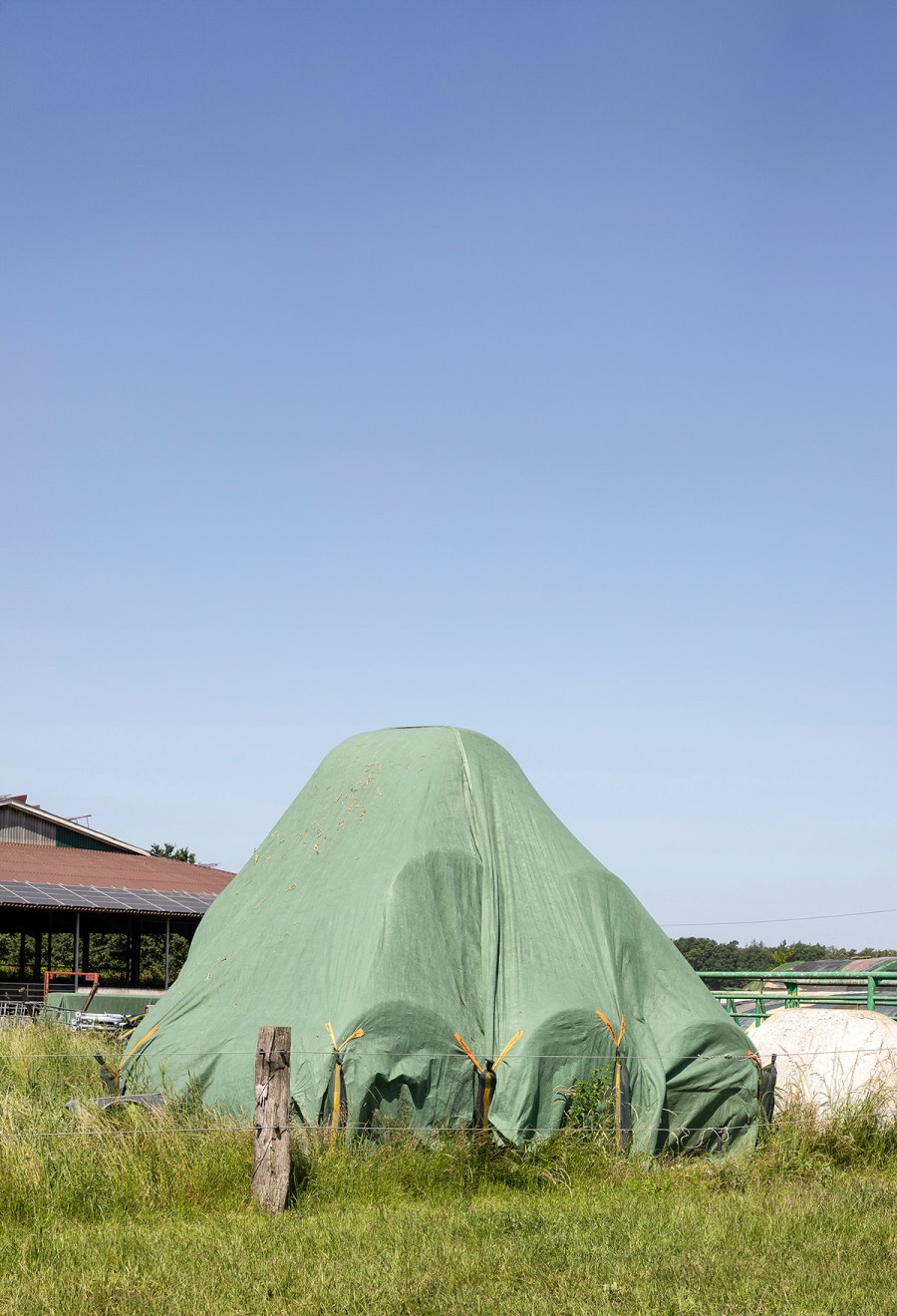They may all be green, but there are some critical differences when it comes to fleece covers for stacked straw bales. That’s our conclusion after taking a closer look at Solmax’s Toptex.
KEEPING IT BRIEF
- Fleeces made from endless fibres score highly in terms of low water absorption and fast drainage as well as high air permeability.
- With the Toptex fleece, bales can be stored in a field for a year or more without major losses.
- For this, the cover has to be suitably weighted down so it remains taut, there is a suitable amount of wind, and the bales are protected from ground moisture rising up.
The problem with sheds is that you can never have enough, especially if you have livestock. And with straw prices continually on the up you want to make sure your fodder investment is suitably sheltered. So, is storing in a field under a suitable cover a viable option?
From speaking to a few farmers about their experiences of storing straw in the field, we found opinions are much divided. While some say they have no issues even after a year, others report significant straw losses due to mould and rot caused by damp.
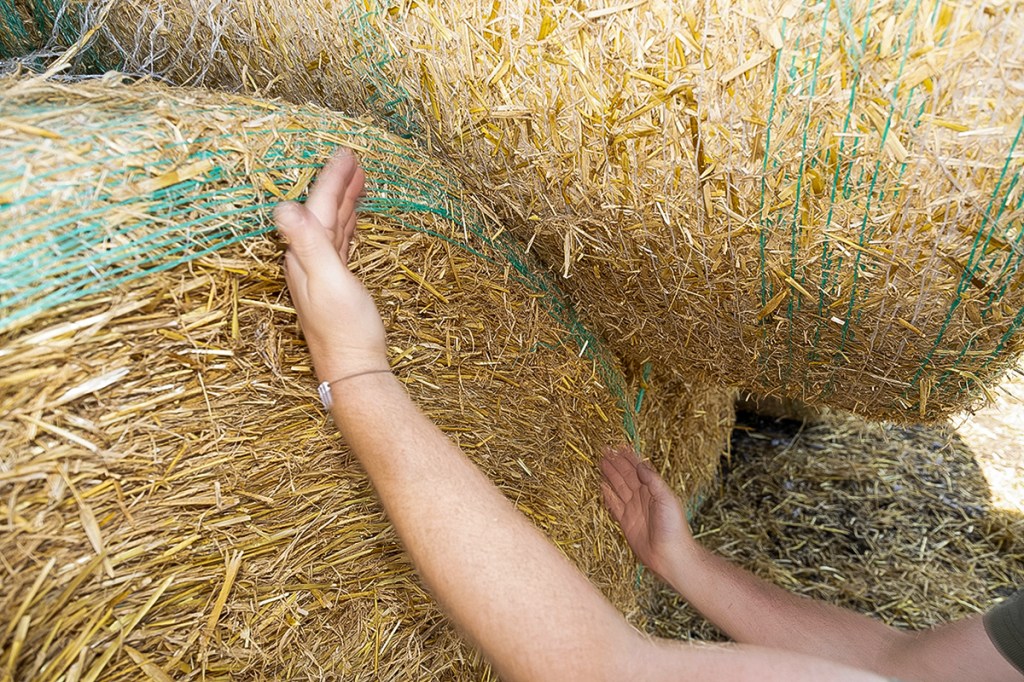
Two manufacturing processes
To try to figure out why there is such a split in farmer opinion, we decided to do a bit of investigating and talked to Austrian firm Solmax who has been offering fleece covers for bale stacks, woodchip, beet and compost clamps for around 40 years. As well as this wealth of experience, they are one of the few cover manufacturers who still work with continuous fibres.
Continuous fibres are made from melted polypropylene granules that are drawn into long threads that are subsequently layered and compressed in a continuous process. The resulting fabric roughly resembles that of a thatched roof. And just like a thatched roof, a continuous fibre fleece sheds most of the rainwater.
Another plus of continuous fibres is that the surface structure readily hooks to the barbs of a Velcro fastener, which is why you can attach gravel bags with Velcro straps so they remain in place year round, and the cover stays taut.
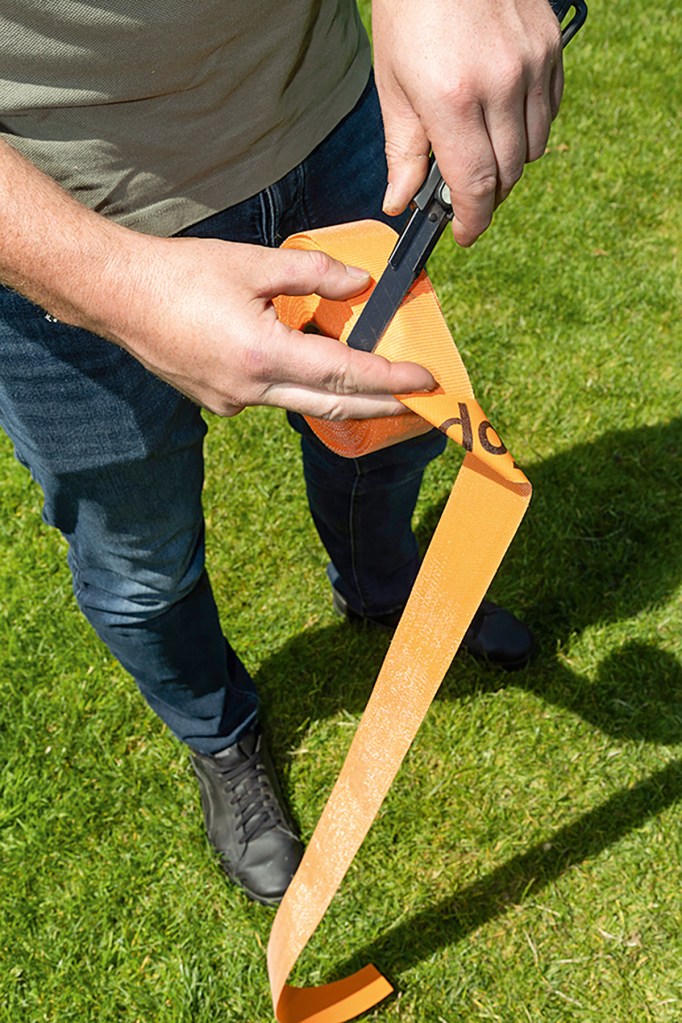
By comparison, Velcro does not have the same long-term latching power on the other type of fleece made using staple fibres.
These fleeces are also made by extruding hot threads, but these are then shredded before being heavily needle punched. Barbed needles punch down through the web at a very high frequency, each time the needles push in fibres from the upper layers downwards. On their way back, the fibres entangle in a nifty criss-cross system and permanently interlock. Water on the surface is then channelled into the fabric. This may explain why in our laboratory test, a needled nonwoven fleece soaked up water like a sponge. More on this shortly…
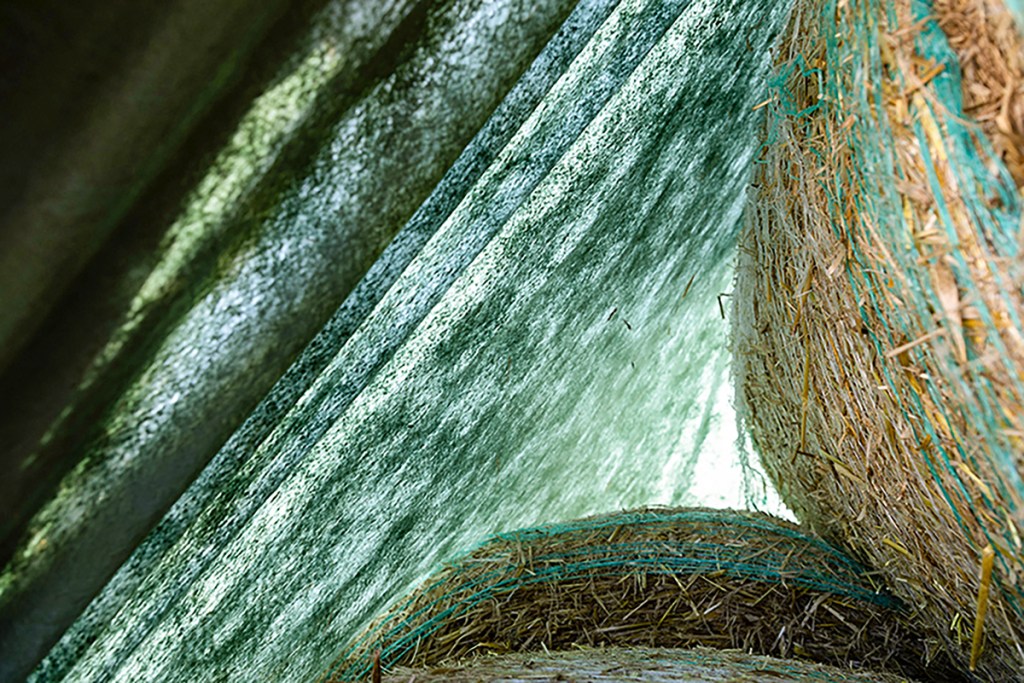
Differences in the detail
To be very clear, a fleece is not waterproof. However, the material’s permeability has a big advantage in allowing the wind to dry the fleece cover after it rains. But it does make a difference if a fleece absorbs even the slightest drizzle like a sponge or whether it absorbs significantly less and allows that small amount of water to quickly run off.

If a fleece does soak up a lot of water, it sits on the straw bale like a wet towel. Wind that normally dries the bales is then delayed in reaching the straw. This could also explain why some farmers experience mould and rot where the bales make contact in the stack.
Gravel bags replace pegs
The fact that the risk of mould and rot is reduced with Somax’s Toptex fleece has to do with the covers production. But what is critical is that a fleece must be kept taut at all times. If the fleece starts to sag or cling to the bales, water will not run off properly. This is where gravel bags attached with the Velcro straps come into their own — they pull the cover taut, preventing it from flapping even in a strong wind. And because the bags never touch the ground, they keep the cover tight even if the stack has settled a bit over time.

By comparison, when you are using pegs to hold the sheet down, if the bales settle, the fleece will become loose and start to flap, causing the individual pegs to be pulled out when the wind picks up. Ultimately, the fleece continutes to sag, leading to water pooling in the flat spots on the bales.
Interesting results
So much for the theory. To see whether the differences between a staple and continuous nonwoven sheet are measurable under lab conditions, we tested out a no-name staple nonwoven and a continuous nonwoven from Solmax. To do this, we soaked two fabrics of the same size and weight for one hour and then hung them up vertically to dry. We extrapolated the measured values to 1.0m2 of fabric in order to compare the products more easily.
The results: after one hour in the water, the Solmax Toptex had absorbed 1.09 litres of water, while the staple fleece was 1.43 litres — a difference of almost a third.
To see how quickly the two fleeces could then shed the absorbed water we hung them vertically on a line to dry in the fresh air. After 15 minutes we did our first weighing, which showed that the Toptex fleece was still clinging to 0.4 litres of water, while the staple sample was retaining 0.6 litres. After 45 minutes, the Toptex still had 0.17 litres of water, while the staple was 0.34 litres.
The Toptex sample was dry after 90 minutes, but the staple cover took a full four hours. We thought there would be a difference but didn’t expect it would be this much.
In our test, the continuous fibre Toptex fleece not only absorbed less water than the staple cover but also dried almost three times quicker. In short, bales stored in the field and covered up by the Toptex are exposed to less rainwater, and the faster drying process gives the bales significantly more time to air out before the next rain comes.

Practical experience
But do our lab tests also reflect the real-life experience? To get an idea, we examined a straw stack in June belonging to Bernhard Ickling, nearly a full year after it had been stacked. Although most of the 250 straw bales were gone, those remaining gave a good idea of how the sheet had protected them.
Overall, the bales looked to be in relatively good condition after almost a year of being stored in the field. We couldn’t even detect damp between where the bales met each other.
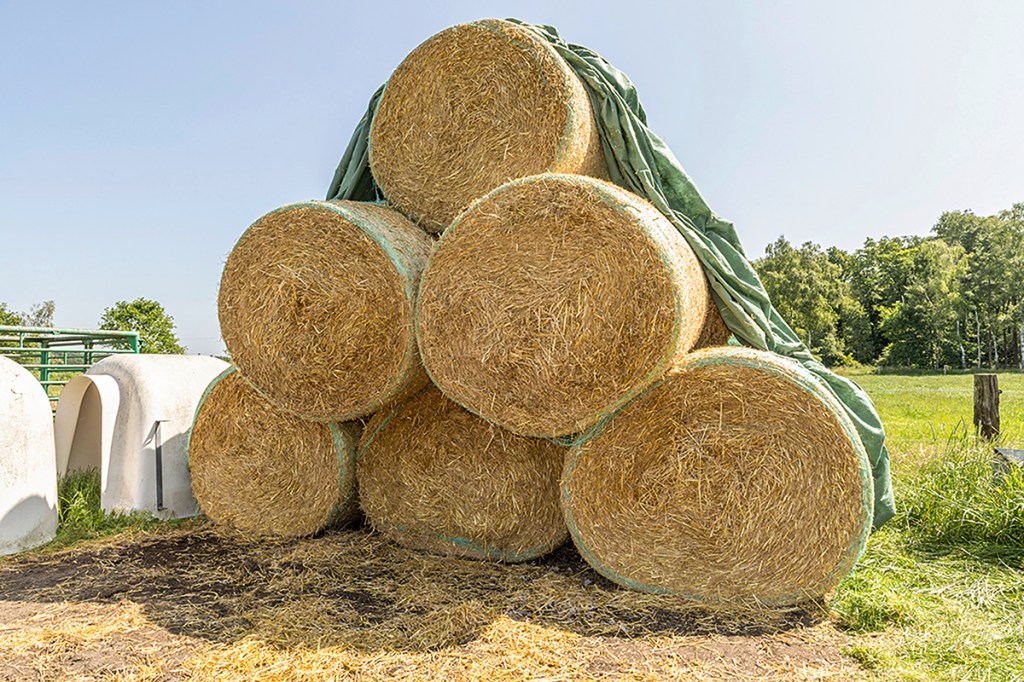
Prices
Solmax sells its Toptex fleece cover in the UK through Wrexham-based distributor Agritel. Price wise a 9.80m by 12.50m fleece is £199, which works out at £1.62/m².
Comparable staple fleeces cost about 20% less at the time of our survey. When asked about the higher price, Solmax refers to its fewer losses and an extended service life — a sheet should last seven to 15 years. By comparison, staple fibre covers often need replacing after three to five years.
If you want to know the age of a fleece to distinguish new and old covers, Solmax has started printing the year of manufacture along with the product name on the sheet.
Martin Zäh
For more up-to-date farming news click here and subscribe now to profi and save.

